This post may contain affiliate links. I receive a small commission at no cost to you when you make a purchase using my link.
We’re big Clue fans—Clue Jr, Clue Suspect, Clue the movie and even our own Mafia Murder—we love them all. So adding Who Did It …? was an easy choice. But how would it compare to the classic Clue? Keep reading to find out. You will find it has some similarities but is also very different.
Note: the Who Did It game has been updated to Mystery Train with new artwork but is otherwise the same game.

Premise of the Game
There has been a murder on the train and you, playing as one of the detectives, have to race to solve the crime first.
Who Did It was created by real murder mystery buffs. First, it takes place on the Oriental Express (like the Agatha Christy classic Murder on the Oriental Express). Next, the character names are “Missing Marbles,” “Hercules Parrot,” “Sheerluck Homes,” “Hugh Dunnit,” “Ivan Inkling,” and “Geisha Klu” –all great play on word names.
Setting up Who Did It
First, you need to set up the train. There are six, interlocking train cars numbers one to six that need to be placed end to end. (You can put them in a circle or side by side if need be.)
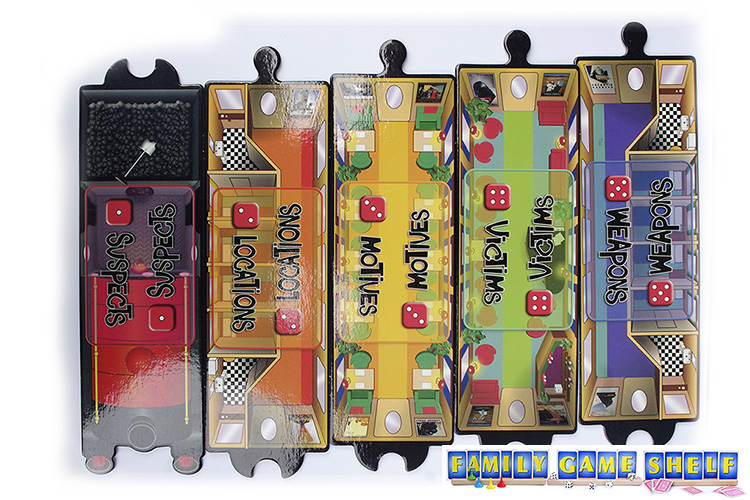
Next, everyone picks a detective and places their mover in a train car.
Next, are the cards. Each category is shuffled and one card from each is chosen and set aside. This is the answer so no one should look at it.
Next, all players get one card from each of the categories. The rest of the cards are placed on their corresponding train cards. (If there are six players there will be one extra cards.)
Last, all players should check off their cards on their sleuthing sheets.
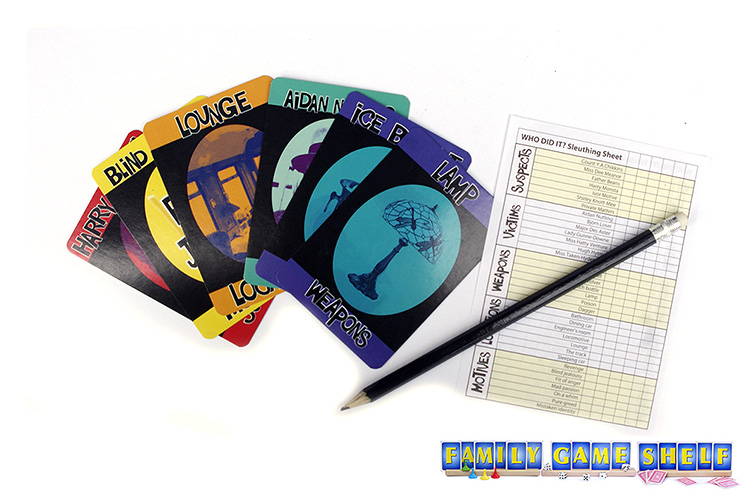
Playing Who Did It
On a player’s turn, she will roll the dice and move to the train car that has the same number on it. If there are cards in that car, she picks the top one and adds it to her pile. On the other hand, if there are no cards, she can interrogate any other sleuth in the car. And if there are no cards and no other slushes in the car, she can interrogate any player of her choosing.
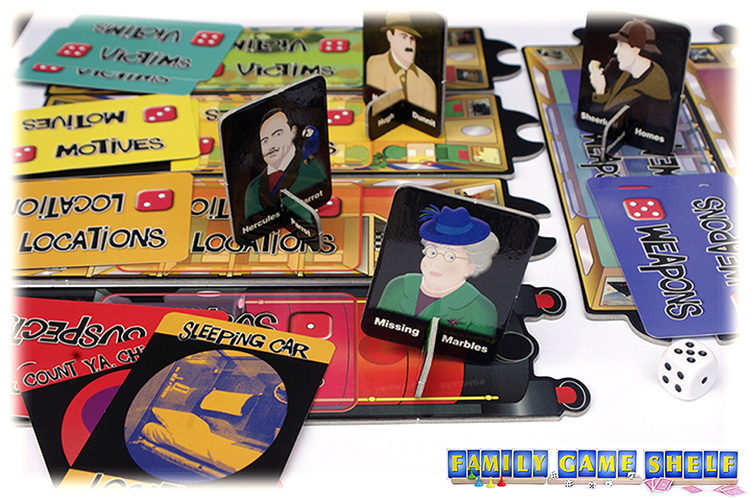
Interrogating
When a player lands in a car with more than one other player, she chooses just one of those players to interrogate. If there are no other players in the car, she picks someone to ask. She is only allowed to interrogate the category of the car she is in. For example, if she is in the suspect car, she can only ask about suspects.
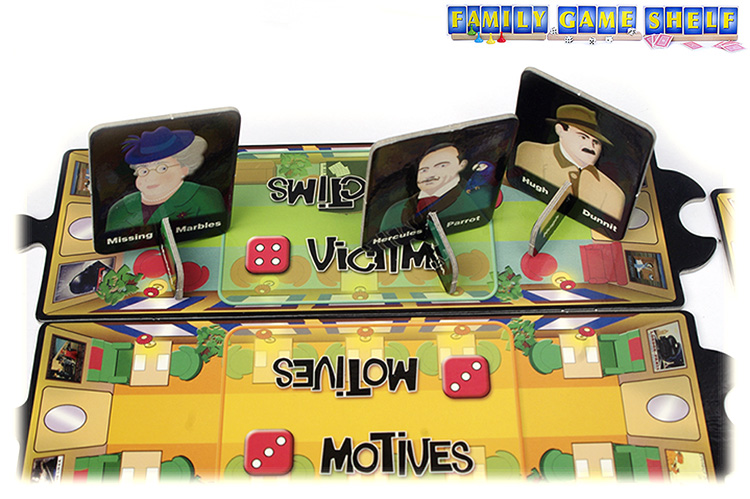
When being interrogated, a player holds out all of his cards that he has that match the category. The first player then selects a card, looks at it and makes a note of it before handing it back.
Engineer’s Room
When you roll a six, you move to the Engineer’s Room. This car is special as it doesn’t have a category. When you are in this car, you can choose the category that you are interrogating. For example, you could choose victims or locations. As before, if there is another player in the car, you need to interrogate them. On the other hand, if you are alone in the car, you choose any player in the game to interrogate. The rest of the process is the same.
The game continues clockwise with each player rolling the dice, moving cars and collecting info.
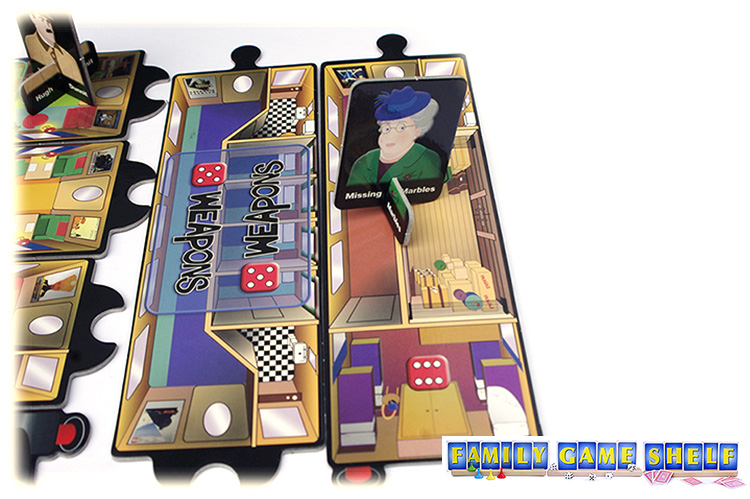
Winning Who Did It
When you want to make a guess as to the solution to the crime, you need to make the accusation on your turn before rolling the die. You may then secretly look at the answer cards. If you are correct, you win the game.
On the other hand, if you are incorrect, you must show your cards to all the other players. You are now out of the game.
What We Like
First, we like that it has a different way of playing than Clue. We like the randomness of rolling the dice to see where you will land. We also like that on every turn you will get to see a card. Also, there is no being pulled fro one location to the other and feeling helpless. (Is there anything worse in Clue than when you are the murder and everyone has you room hopping and you don’t get a turn to find out the info you want?)
Second, we love the humor of this game. With suspects like “Shirley Knott-Mee,” “Miss Dee Meanor,” and Count Ya Chikkins,” and motives like “On a whim,” “Fit of anger,” and “Pure greed,” you can’t help but laugh. And isn’t that the point of playing games—to have a great time?
Next, we liked that it is a more even playing field then Clue. There is more randomness to the game than in Clue. There is little chance of piecing things together without seeing the cards like you can in Clue. This makes it easier to win for players who aren’t taking detailed notes or younger players.
Last, the quality of the game is great. It also has lots of playability.
What We Don’t Like
First, it can take a while to play. At first, you collect info quickly (which is great) but then you end up seeing the same card from the same player over and over. Towards the end you end up saying “never mind” and skip seeing the card. This can make it feel a little drug out at the end when you just want to figure out Who Did It!
Along the same lines, there is a lot of info to find out. Each of the five categories has seven cards. It can take a while to get all the info.
Last, the box. The components are well stacked in the box (they don’t slide around and get messed up) however, the box could be about half the size that it is.
Is Who Did It or Mystery Train worth Adding to your Family Game Shelf?
We were surprised at how much we liked this game. We didn’t think it would be as good as Clue. However, we like some of the elements better than Clue. (One of us really liked the more even playing field.) If you have younger kids, then this is a really good fit (although they might miss some of the humor of the game, but you won’t.) So, yes we recommend adding Who Did it, or rather Mystery Train, to your Family Game Shelf.
To get your copy of Mystery Train, shop here. Canadians can get their copy here. Be sure to check out our Family Game Shelf Shop where you can find all kinds of original games and seasonal games too.

Rating

Joel:

Julia:

Carrie-Anne:


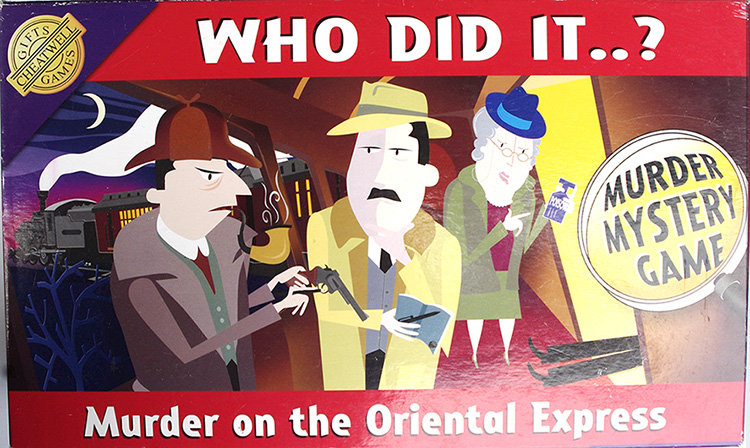

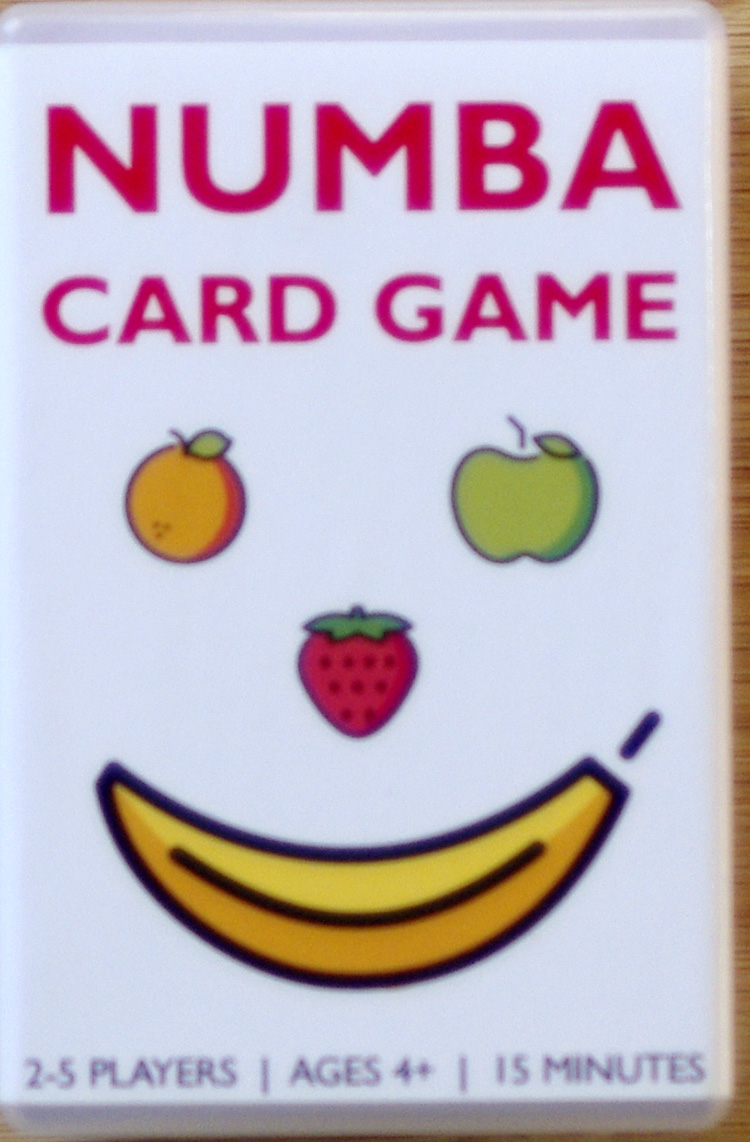

Be the first to reply